In “Finding Your Way: Navigation Tips without a Compass,” you will discover a variety of techniques to help you navigate through unfamiliar territory even without the aid of a compass. Whether you’re an adventurous hiker, a outdoor enthusiast, or simply find yourself without a compass, this article will provide you with valuable insights on how to find your way using alternative methods. From natural navigation cues like the position of the sun and stars, to innovative tools from trusted brands such as Garmin and Suunto, you’ll learn how to rely on your instincts and available resources to confidently navigate any terrain. So, get ready to embark on a journey of discovery and empowerment as you master the art of navigation without a compass.
Celestial Navigation
Celestial navigation refers to the ancient practice of using celestial bodies to determine direction and navigate. This method can be incredibly useful when you find yourself without a compass. There are several celestial bodies that can be used for navigation, including the sun, the moon, and the stars.
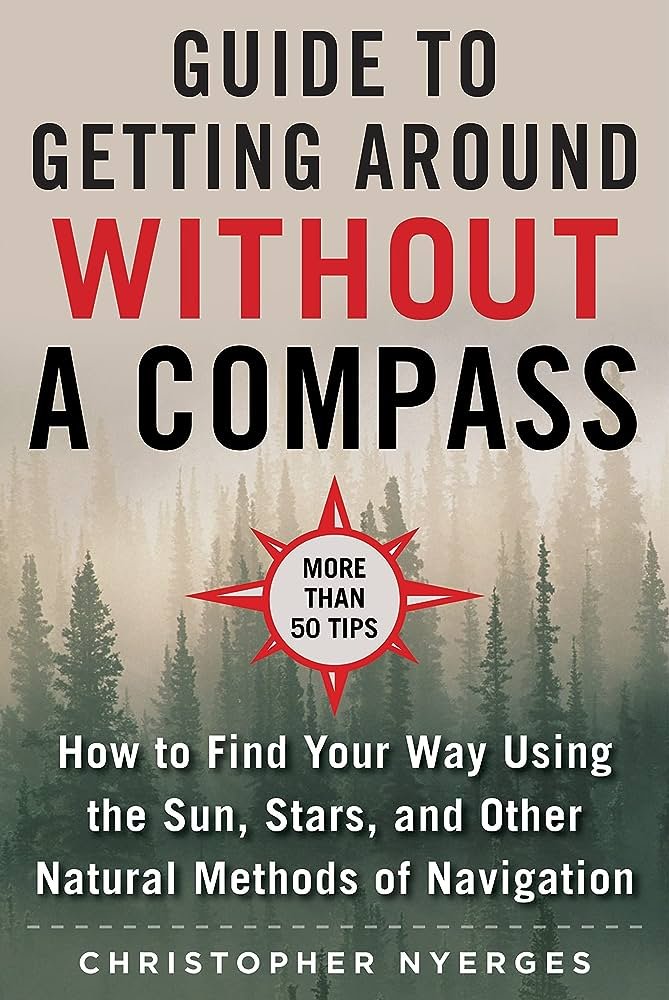
Using the Sun
The sun is one of the most reliable sources for navigation. During the day, you can use the sun to determine your directions. In the Northern Hemisphere, the sun rises in the east and sets in the west. By observing the position of the sun in the sky, you can approximate north, south, east, and west. For example, if it is early morning and the sun is on your left side, you are likely facing north.
Using the Moon
The moon can also be a helpful celestial body for navigation. During the night, the moon moves across the sky just like the sun. By observing the moon’s position, you can determine your directions. The moon rises in the east and sets in the west, just like the sun. Additionally, the illuminated side of the moon can provide further information. The illuminated side faces the sun, so if the illuminated side is on your right, you are facing south.
Using the Stars
Stars have been used for navigation for centuries. By identifying specific constellations or stars, you can determine your directions. The North Star, also known as Polaris, is particularly helpful for navigation. It is located almost directly above the North Pole, so if you can find the North Star, you can determine which way is north. Additionally, the position of other constellations can give you a general sense of direction.
Natural Navigation
In addition to celestial navigation, you can also rely on natural elements to find your way. These include trees and plants, wind patterns, and bodies of water.
Using Trees and Plants
Trees and plants can provide valuable clues about your surroundings. In the Northern Hemisphere, trees tend to have more moss on their north side due to less direct sunlight. By observing the moss growth, you can determine which way is north. Additionally, some trees and plants have leaves or branches that naturally point in a specific direction. By paying attention to these natural indicators, you can navigate with more confidence.
Using the Wind
The wind can also be a helpful navigation tool. Take note of the wind direction and use it to guide your way. For example, if you know that the prevailing wind in your area generally comes from the west, you can use this information to determine other directions. Additionally, the rustling of leaves can indicate wind direction, so listen closely to the sounds around you.
Using Bodies of Water
Bodies of water, such as rivers, streams, and even the ocean, can be excellent navigational aids. Water tends to flow in a consistent direction, which can help you determine your way. You can follow the flow of a river or stream to find a path or use the coastline to guide you. If you are near a large body of water, such as an ocean, you can often determine north and south based on the direction the waves are coming from.
Using Natural Landmarks
Natural landmarks, including mountains, rivers, streams, and rock formations, can also assist you in navigation.
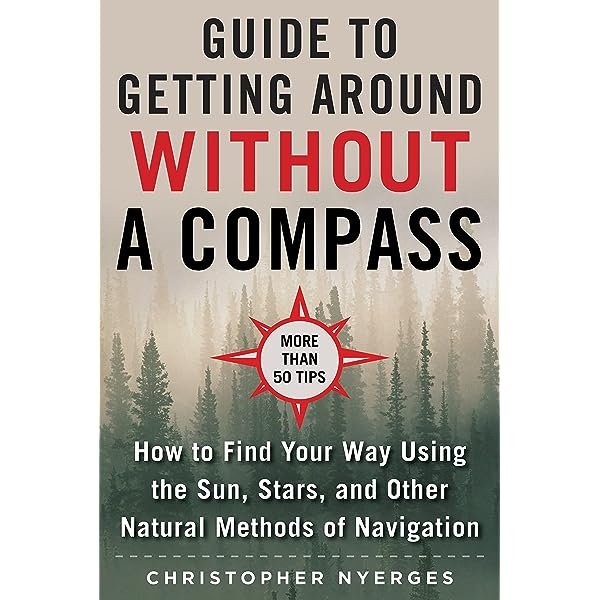
Mountains
Mountains are easy to spot and can serve as prominent landmarks. By identifying nearby mountain ranges or individual peaks, you can gain a sense of direction. Mountains can also cast noticeable shadows, which can further help you determine the time of day and your orientation.
Rivers and Streams
Rivers and streams are not only excellent sources of water but also valuable navigational features. They tend to flow in a consistent direction, which can provide guidance when finding your way. Following a river or stream can lead you to civilization or provide a path to follow.
Rock Formations
Rock formations, such as cliffs or unique rock formations, can act as distinctive landmarks. Pay close attention to these natural features and use them to orient yourself. Their specific shapes and locations can help you navigate effectively.
Using Shadows and Time
Shadows and time can also be utilized for navigation in the absence of a compass.
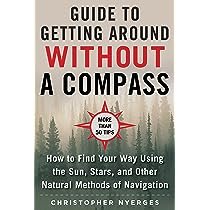
Shadow Stick Method
The shadow stick method relies on the movement of the sun and a stick placed in the ground. By placing a stick vertically in the ground and marking the tip of its shadow, you can determine the direction east and west. Wait for some time, and mark the tip of the shadow again. The line connecting the two marks will indicate a rough east-west axis, with the first mark being west.
Clock Method
The clock method uses the sun’s position in the sky to determine direction. Imagine yourself standing in the center of an analog clock, with north pointing toward 12 o’clock. The sun’s position can be compared to the hour hand of the clock. If the sun is directly overhead, it would be 12 o’clock, indicating true south. By correlating the sun’s position to the clock, you can navigate in other directions as well.
Using the Weather
Observing the weather can provide valuable information for navigation.
Observing Clouds
Clouds can give you clues about the weather and wind direction. Clouds moving in a specific direction can indicate the path of prevailing winds. Pay attention to cloud formations, their movement, and any changes in the weather to help you navigate.
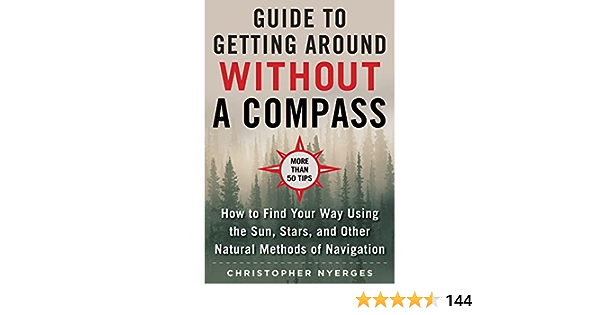
Analyzing Wind Patterns
Wind patterns can greatly impact navigation. Pay attention to the direction and strength of the wind. This information can guide your decisions and help you determine the best route to take.
Using Wildlife
The behavior of wildlife can provide insights into your environment.
Birds
Birds are excellent indicators of nearby water sources and can be observed in flight patterns. Many birds have specific migration patterns and can help you determine which way is north or south. Additionally, flocks of birds flying towards a particular direction may indicate the presence of food or shelter.
Insects
Insects, such as bees and ants, can also provide valuable information. Certain insect species build their nests in specific orientations or exhibit behaviors that correlate with the time of day. By observing these patterns, you can gain insight into your location and the time.
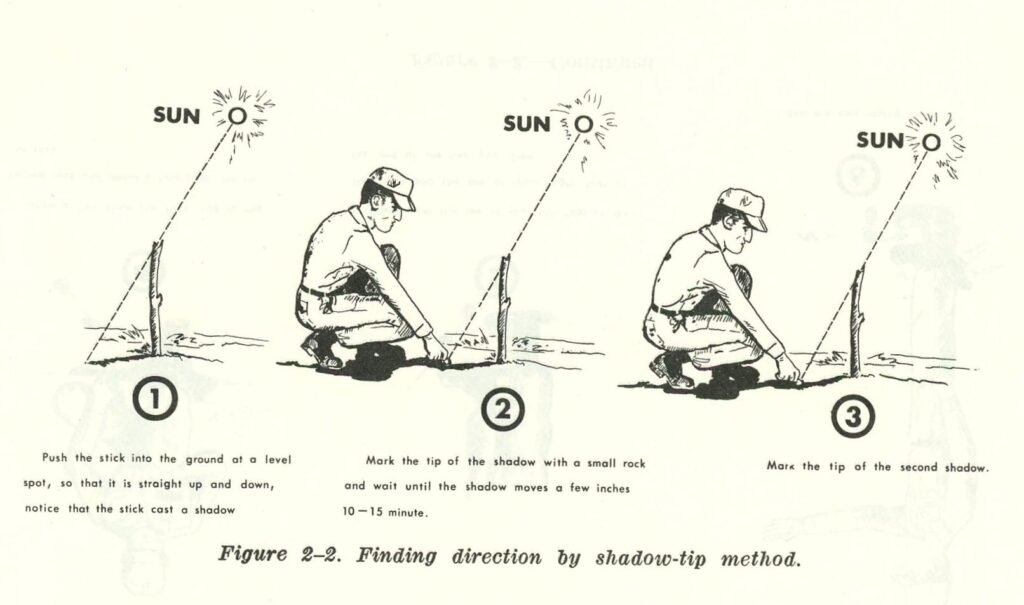
Animal Behavior
Pay attention to the behavior of other animals in your surroundings. For example, grazing animals often align themselves in a certain direction to protect themselves from the wind or predators. By observing animal behavior, you can gather useful information about your environment and navigate accordingly.
Using Improvised Tools
If you find yourself without traditional navigation tools, you can create your own improvised tools to assist in finding your way.
Making a Sun Dial
A sun dial is a simple instrument that uses the shadow cast by the sun to tell the time. By marking the position of the shadow at certain intervals, you can approximate the time and orient yourself based on the sun’s position.
Creating a Shadow Compass
To create a shadow compass, you will need a straight stick and a piece of string. Align the stick with the shadow cast by the sun, and tie the string to the stick at the point where the shadow ends. The string should hang freely and create a line pointing north-south. By following this line, you can navigate accurately.
Understanding the Environment
Understanding your environment is crucial for effective navigation.
Understanding Local Geography
Familiarize yourself with the local geography. Study maps, look at landmarks, and memorize key features. Understanding the layout of the land will greatly assist your navigation skills.
Knowing the Sun’s Path
The sun follows a predictable path across the sky, rising in the east and setting in the west. Learn how the sun’s path changes throughout the day and throughout the year based on your location. This knowledge will help you determine direction even without a compass.
Identifying True North
Being able to identify true north is essential for accurate navigation. Use the techniques mentioned earlier, such as celestial navigation or shadow methods, to find true north. This will provide a solid foundation for navigating in other directions.
Navigation Apps and Devices
While navigating without a compass is possible using natural techniques, technology can also be a helpful tool.
Smartphone Apps
Numerous smartphone apps are available for navigation. These apps utilize GPS technology to track your location, provide maps, and assist in finding directions. Popular navigation apps include Google Maps, Apple Maps, and MapQuest.
GPS Devices
Dedicated GPS devices are specifically designed for navigation and often have additional features such as topographic maps, waypoint tracking, and compass functions. Brands known for their GPS devices include Garmin, Suunto, and Magellan.
Wearable Technology
Wearable technology, such as smartwatches, can also assist you in navigation. Many smartwatches offer GPS capabilities and can be used to track your location and find directions conveniently on your wrist.
Navigation Skills and Techniques
Developing navigation skills and techniques can greatly enhance your ability to find your way without a compass.
Dead Reckoning
Dead reckoning is a technique that involves estimating your current position based on known starting point, speed, and direction of travel. By keeping track of distances traveled and direction changes, you can approximate your current location and navigate accordingly.
Pacing and Range Estimation
Pacing involves measuring distances by counting your steps. By determining your average step length and counting the number of steps taken, you can estimate distances traveled. Range estimation is a similar technique that involves visually estimating distances based on known reference points or landmarks.
Navigating with a Map and Compass
While the focus of this article is on navigation without a compass, knowing how to use a map and compass is a valuable skill. By combining natural navigation techniques with map and compass reading skills, you can navigate with precision and confidence.
In conclusion, navigating without a compass may seem daunting at first, but with a combination of natural navigation techniques, understanding of the environment, and utilization of modern technology, finding your way becomes an achievable task. Whether you rely on celestial bodies, natural landmarks, shadows, wildlife, improvised tools, or your own navigational skills, the ability to navigate without a compass is a valuable skill that can greatly enhance your outdoor adventures. So next time you find yourself without a compass, remember these valuable techniques and confidently explore the world around you.
